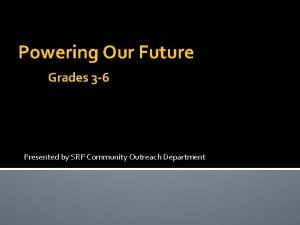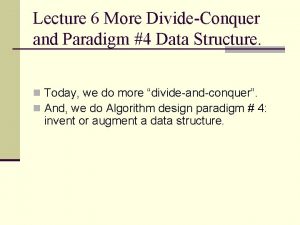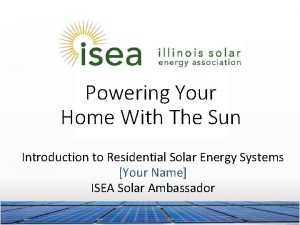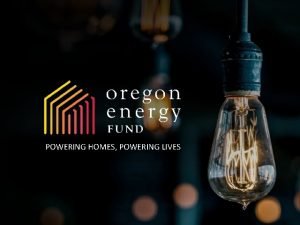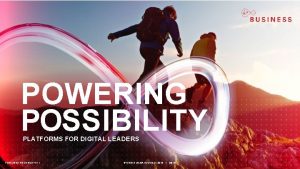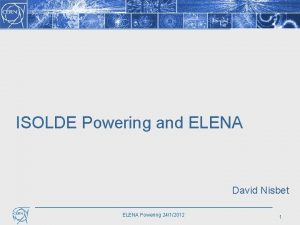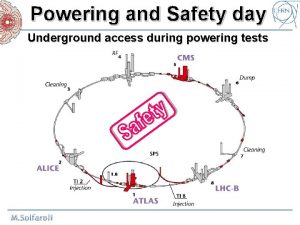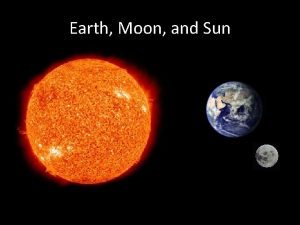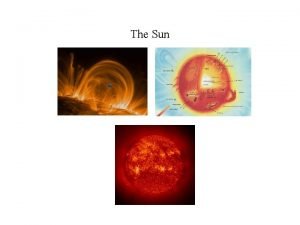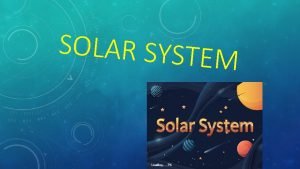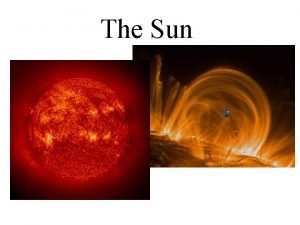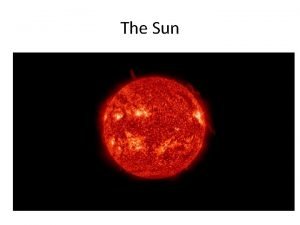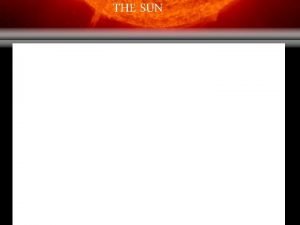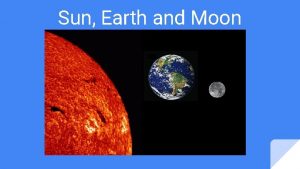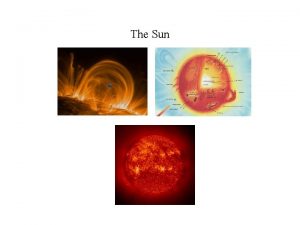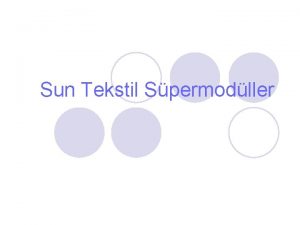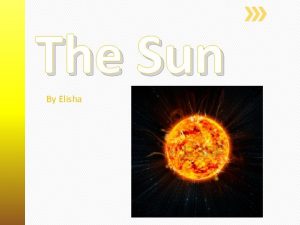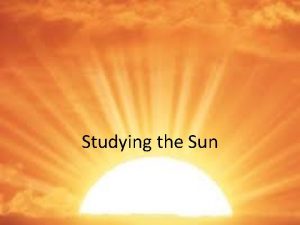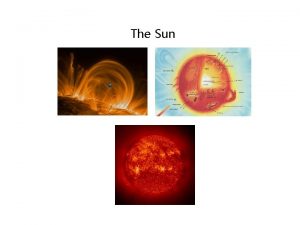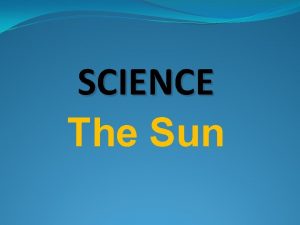Powering Your Home With The Sun Introduction to



























- Slides: 27

Powering Your Home With The Sun Introduction to Residential and Community Solar {Name} {ISEA Position}

Illinois Solar Energy Association (ISEA) ISEA’s mission is to educate and advocate for the widespread application of solar and other forms of renewable energy to the people of Illinois • Established in 1975 • 501(c)3 charitable organization • Related 501(c)6 trade association (Illinois Solar Industry Association) • Membership-based organization • Membership: 500+ individual members and ~150 businesses • Hosts annual Illinois Solar Tour as part of the National Solar Tour

Illinois Electricity Generation • As of June 2019, there is currently 139 MW of solar installed in Illinois • State law requires 25% of electricity used in the state to come from renewables by 2025 Source Data: U. S. Energy Information Administration

Why Go Solar? ✓ Reduces carbon emissions & environmental concerns ✓ Improves public health ✓ Creates jobs ✓ Saves money on electric bill ✓ Increases home value ✓ Inexhaustible energy supply

Common Myths outh S a e v a h to “You have of. ” o r u o y n o exposure It will be hard er to sell my house. It’s too expensive! Solar pan els will ca use my roof t o l eak, deteriora te or colla pse. You can sell the excess energy you produce We don’t g et enough su n. Installing so lar will increase my property ta xes! panels r a l o s ; ld here o c , hail, o o w t o s n s It’ d thstan can’t wi s, & sleet. wind

Too Far North? Not Enough Sun? Alaska Germany is a world leader in solar, yet they have less sun radiation than Alaska. Germany

The Electric Grid is Changing Centralized Large power plants; under centralized control Distributed generation grid; a “smart” connected network

Residential Solar System Primary Components 1. PV Collectors 2. Inverter/Micro-Inverter 6 3. Service Panel 4. Household Load EV 5. Electric Meter 6. Grid & Net Metering

Net Metering

Earning Credit on Your Bill Com. Ed Bill – March 2018 Your bill will change, showing: In Flow (from grid) and Out Flow (to grid) readings

Earning Credit on Your Bill Com. Ed Bill – March 2018 If more In than Out, you pay the difference. If more Out than In, you rollover the excess to the next month. Typically rollovers can go month to month but not year to year.

Renewable Energy Credits (RECs) RECs quantify and monetize the environmental benefit of adding solar to the grid Homeowner installs a solar system Solar system produces a number of MWh per year (1 MWh = 1 REC) IPA purchases RECs for Com. Ed and Ameren Systems <10 k. W AC receive 15 -year incentive upfront! This is in addition to the saving on their bill (net metering)

Process to Go Solar • • • Schedule a Site Evaluation Choose a Contractor Sign Interconnection Agreement Permit Completed by Installer (typ. 30 -60 Days) Material Delivery (typ. 2 Weeks) Installation (typ. < 1 Week) Total Duration: approx. 3 -4 months to go solar!

Solar Incentives State Incentives • ~20 -30% based on SREC $ amount • 1 SREC = 1 MWh solar energy • RECs monetize environmental benefits of solar generation • Must secure a contract to sell SRECs to IPA through Approved Vendor Federal Incentives • Tax Credit for 30% of system cost • Begins to step down after 2019: • 2020: 26% • 2021: 22% • 2022: 10% • After 2022: • 0% (residential systems) • 10% (commercial/utility-scale)

Future Energy Jobs Act (FEJA) • Part of Illinois Power Agency (IPA)’s Long Term Planning Process • $200 M annually from Lines Charge • Program launched Jan 2019 • New solar power to be built = nearly a 4000% increase! Year Cumulative New Solar 2020 1, 350 MW 2025 2, 000 MW 2030 2, 700 MW*

Adjustable Block Program Details Category Goal Net Metering REC Contract DG Rebate Small DG <10 k. W AC 25% No Change 15 Years, Paid upon energizing $250/k. W DC Paid upfront Large DG 10 k. W – 2 MW AC 25% No Change 15 Year, 20% when energized, balance over 4 Years $250/k. W DC Paid upfront Community Solar <2 MW AC 25% Energy only 15 Year, 20% when energized, balance over 4 Years $250/k. W DC Paid upfront IPA Discretion <2 MW AC 25% Based on Category $250/k. W DC Paid upfront

ABP – Residential Blocks Group A (Ameren, Mid. American, Mt. Carmel, and Rural Co-Ops and Munis in MISO) Group B (Com. Ed, and Rural Co-Ops and Munis in PJM) Block MW Size Sub. Category (k. W AC) REC Price ($/REC) Block MW Size Sub. Category (k. W AC) REC Price 1 22 <= 10 k. W $85. 10 1 52 <= 10 k. W $72. 97 -- > 10 -25 k. W $78. 70 -- > 10 -25 k. W $73. 23 22 <= 10 k. W $79. 18 52 <= 10 k. W $71. 07 -- > 10 -25 k. W $71. 76 -- > 10 -25 k. W $64. 88 5. 5 <= 10 k. W $76. 02 12 <= 10 k. W $68. 23 -- > 10 -25 k. W $68. 89 -- > 10 -25 k. W $62. 28 2 3

What is Community Solar? Community solar refers to larger-scale solar facilities shared by individual community members Systems do not have to be located near the entities they service, so suited for customers that can’t install solar on their roof or property

What is Community Solar? Systems can be owned by subscribers or owned by third-party developers that sell subscriptions to customers

What is NOT Community Solar? Community Group Purchasing, sometimes called “Solarize” programs, utilize group purchasing power to provide rooftop solar solutions at lower costs. Utility-Scale Projects, typically 50+ MW connected to transmission system, help utilities diversify their energy portfolio but do not provide individuals and business direct access to the solar facility Municipal Aggregation or Green Power Purchasing programs. These arrangements only provide subscribers the environmental attributes from solar facilities at a premium cost - they do not share the energy output from the solar facility and do not save subscribers money.

Community Solar Participating subscribers receive an energy credit from the utility (not the actual electrons) Projects supplying residential subscribers earn a REC premium Subscribers must be located in the same utility service territory as the community solar project In Illinois, no single entity may off-take more than 40% of a community solar project

Illinois Solar for All Program

Solar for All - Low Income Program Projects must include Solar must produce job training energy and economic opportunities if benefits that flow directly available, and shall to participating lowendeavor to coordinate income households with the job training programs Priority given to projects that show meaningful involvement of community members in designing proposals

Solar for All - Low Income Program Non-Profits & Public Facilities Projects Low-Income Community Solar Projects Low Income Community Solar Pilot Projects Low-Income Rooftop Solar Projects

Find a Professional Become a Member Public Education Use ISEA’s Find a Professional Tool on the ISEA website to find and contact residential installers in your area! ISEA Membership provides you with numerous benefits. Apart from supporting the future of solar energy through your donation you will receive: Use ISEA’s Education webpage to learn more about the entire solar process. ISEA recommends that you contact at least 3 different installers to get quotes for your solar system ➔ Discounts to ISEA events and classes ➔ Timely updates concerning policy, events, and announcements ➔ ISEA voting rights ➔ And More! From tax credits to policies to the technical elements of solar, the ISEA education page is a great tool to learn more!

Enter to Win a Brand New Tesla Model X from ISEA!

For more information visit www. illinoissolar. org or email contactisea@illinoissolar. org
 Powering our future
Powering our future Powering a number divide and conquer
Powering a number divide and conquer Pengertian home care
Pengertian home care Perbedaan home care dan home visit
Perbedaan home care dan home visit Homes for sale in roebuck sc
Homes for sale in roebuck sc Unit 3 home sweet home
Unit 3 home sweet home Come home come home jesus is calling
Come home come home jesus is calling Oak springs rv park
Oak springs rv park What did you say
What did you say Arman home sweet home
Arman home sweet home She said that, home economics stands for the ideal home.
She said that, home economics stands for the ideal home. Home sweet home survive prayer
Home sweet home survive prayer Give us your hungry your tired your poor
Give us your hungry your tired your poor Hát kết hợp bộ gõ cơ thể
Hát kết hợp bộ gõ cơ thể Lp html
Lp html Bổ thể
Bổ thể Tỉ lệ cơ thể trẻ em
Tỉ lệ cơ thể trẻ em Gấu đi như thế nào
Gấu đi như thế nào Chụp tư thế worms-breton
Chụp tư thế worms-breton Chúa yêu trần thế
Chúa yêu trần thế Các môn thể thao bắt đầu bằng tiếng đua
Các môn thể thao bắt đầu bằng tiếng đua Thế nào là hệ số cao nhất
Thế nào là hệ số cao nhất Các châu lục và đại dương trên thế giới
Các châu lục và đại dương trên thế giới Công thức tính thế năng
Công thức tính thế năng Trời xanh đây là của chúng ta thể thơ
Trời xanh đây là của chúng ta thể thơ Mật thư anh em như thể tay chân
Mật thư anh em như thể tay chân Phép trừ bù
Phép trừ bù độ dài liên kết
độ dài liên kết
